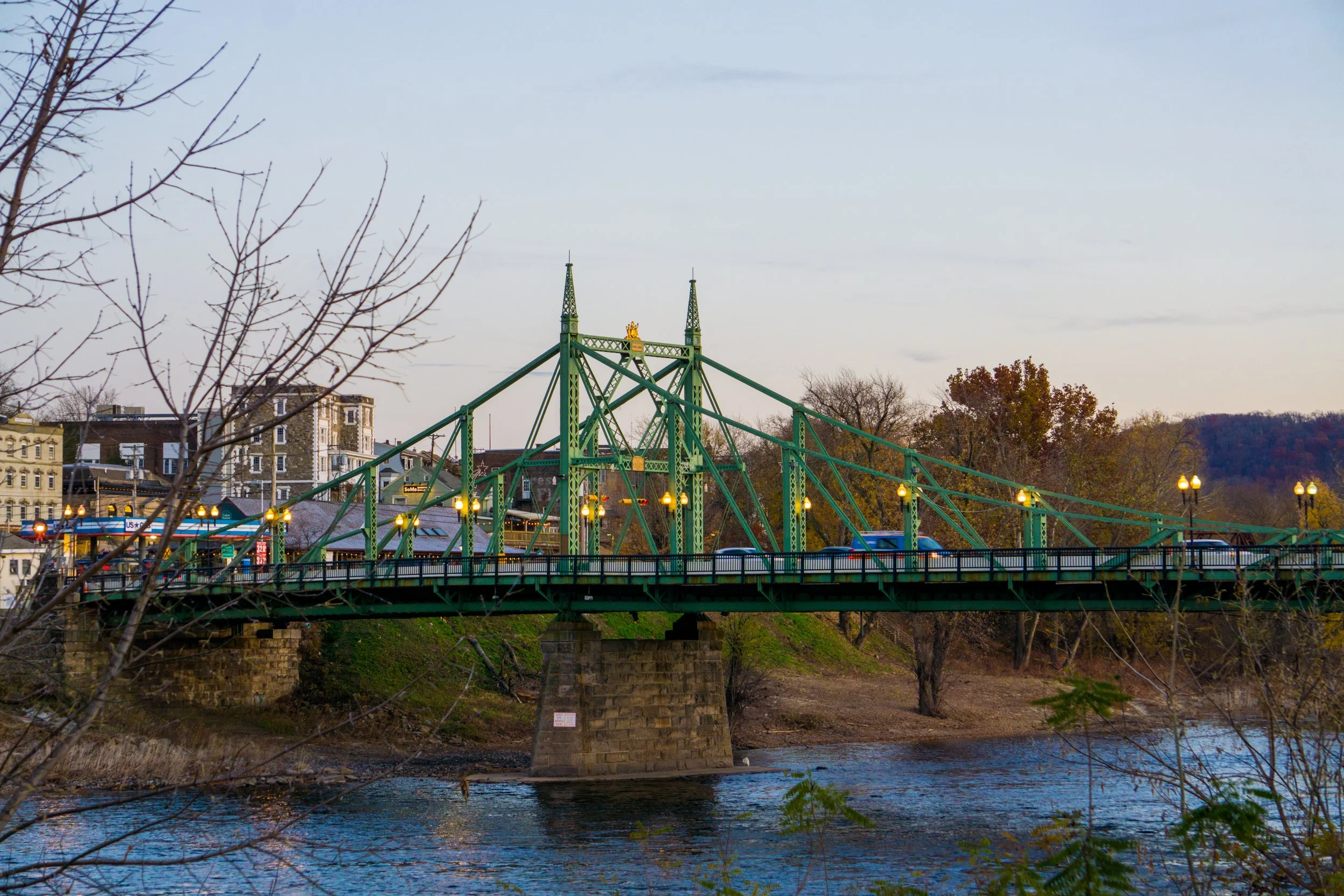Northampton Street Bridge
A steel cantilever truss with a 300-foot center span and two side spans of 125 ft each, crosses the Delaware River between Easton, Pennsylvania and Phillipsburg, New Jersey. It was built in 1895-1896 to the design of James M. Porter, a charter member of the Section. The building contractor was the Union Bridge Company of New York City whose president, Charles Macdonald, served as ASCE president in 1908. The bridge replaced a landmark three-span wooden covered structure erected by Timothy Palmer and opened to the public in 1806. Porter’s bridge has served the traffic between the two states continuously for 100 years except for a two-year period after it was severely damaged by a hurricane-caused flood in August 1955.
The first crossing of the Delaware at Easton was a ferry enfranchised to David Martin in 1739-41. After about a half century of use, the ferry began to be a hindrance to commerce. In 1795 the Delaware Bridge Company was formed and the construction of a substructure for a bridge crossing commenced in 1797. In 1805 the Company engaged the services of the prominent bridge builder Timothy Palmer who designed and erected a covered wooden superstructure of three truss spans 177, 199 and 171 feet long and continuous over two stone piers. The piers were supported on stone-filled timber crib foundations. Palmer’s bridge endured many floods and storms while other bridges fell. However, by the late nineteenth century, when horse-drawn street cars were replaced by trolley cars, the old timber superstructure could no longer handle the demands of traffic. In the 1880s the Delaware Bridge Company decided to build a new bridge of steel.
The plans were prepared by James Madison Porter III, who graduated from Lafayette College with the degree of civil engineer and later became professor of civil engineering at the same school. The contract for demolition of the old timber bridge and piers, and for the construction of the new Northampton Street Bridge was awarded to the Union Bridge Company. The Easton Daily Express of October 3, 1894 described the proposed bridge: The Cantilever pattern has been adopted, which will give the structure the appearance of a suspension bridge. Porter’s choice of cantilevered trusses proportioned to resemble the lines of a suspension bridge provided an economical as well as aesthetically pleasing solution. Construction started in April 1895 and was completed in 1896 even though the new bridge was probably opened to traffic in December 1895. In 1921, the Delaware Bridge Company sold the bridge to the Delaware River Joint Toll Bridge Commission. The new owners freed the bridge of tolls. In August 1955, hurricane Diane ravaged and flooded the eastern seaboard, and the Delaware River overflowed its banks. The floodwaters, 44 feet above normal water level at their peak, topped the roadway of the Northampton Street Bridge. Debris carried downstream by the raging floodwaters accumulated against the bridge and caused a break of about 100 feet in the center span. Immediately after the hurricane, two Bailey bridges were erected some 250 feet north of the damaged structure. These temporaries served for two years while work was in progress to repair the damage. The contract for the repairs was awarded to Bethlehem Steel Company in November 1956 and the bridge was reopened to traffic on October 23, 1957.
During the summer of 1990, the bridge underwent structural rehabilitation. The project involved replacement of the old concrete decks and installation of new guardrail to protect the steel trusses against vehicle impact. A steel beam bridge deck system was installed for the roadway, and timber flooring was placed on the sidewalks. In 1995, following the dedication ceremony as a National Historic Civil Engineering Landmark, three-dimensional replicas of the coats of arms of Pennsylvania and New Jersey were restored to the bridge. They were part of the ornamentation placed on the bridge when built but were removed in 1971.

